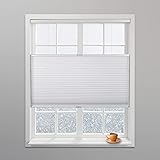Avoiding Common Interior Design Mistakes That Can Sabotage Your Home’s Style
Do you ever look at your home and feel like something isn’t quite right, but you can’t put your finger on it? Perhaps you have fallen victim to some common interior design mistakes that many enthusiasts make. In the accompanying video, design commentators Caroline Winkler and Paige Wassel courageously share their own past home decor mishaps, offering valuable lessons from their journeys. They prove that even seasoned design eyes have made some embarrassing choices along the way. Learning to identify these pitfalls is the first step toward creating a truly cohesive and authentic space.
Every homeowner desires a space that feels both stylish and personal. However, the path to achieving this ideal aesthetic is often fraught with missteps. Understanding these common decorating mistakes can save you time, money, and future regret. We delve deeper into some of the biggest interior design errors, expanding on the candid revelations from the video, and provide practical advice to help you cultivate a home you genuinely love.
Misinterpreting “Vintage” & Falling for Shabby Chic
One prevalent interior design mistake involves confusing genuine vintage finds with specific, often fleeting, styles like “shabby chic.” Paige candidly shares her own college-era blunder, where she mistook a beige-painted, chipped trunk for a coveted vintage item. This anecdote highlights a crucial distinction: authentic vintage items carry history and character, while styles like shabby chic often artificially replicate age, sometimes resulting in a forced or dated appearance.
Furthermore, true vintage pieces, like an antique wooden chest or an authentic mid-century lamp, possess an inherent quality and narrative that mass-produced imitations simply cannot replicate. They offer a unique charm and a sense of timelessness. Conversely, shabby chic, characterized by its distressed finishes and soft, romantic aesthetic, can quickly look passé if not carefully integrated into a broader design scheme. To avoid this common pitfall, one should always prioritize quality and authenticity when seeking vintage items, ensuring they complement your home’s overall aesthetic rather than clashing with it.
Cultivating True Vintage Style
When you are curating a vintage look, focus on quality craftsmanship and original patinas. Instead of searching for items that merely *look* old, seek pieces with a genuine backstory and enduring appeal. Imagine if you discover a beautifully aged leather armchair with natural wear, as opposed to a new piece artificially distressed to mimic age. The genuine article brings depth and character that truly elevates your space. Therefore, educate yourself on different eras and styles to discern authentic finds from fleeting trends.
Over-Personalizing Your Space: Finding the “Serving Size” for Your Passions
Personalizing your home is essential, but it is a delicate balance. Paige recounts a particularly bold decorating mistake from her first New York apartment: an eight-by-eight-foot mural of a Far Side comic in bright pink. Her logic was simple—she loved Far Side. However, she learned a valuable lesson: “Just because you really love something, doesn’t mean you want it everywhere, all day.”
This illustrates a key principle in home decor: while passions make a home unique, their “serving size” matters significantly. Caroline echoes this sentiment with her own love for tomatoes, which led to a deluge of tomato-themed gifts. She realized that while she adored tomatoes, an entire room dedicated to them would overwhelm her space. It is important to remember that design aims to create a harmonious environment, and sometimes, less is indeed more. A well-placed nod to a passion can be more impactful than an overt declaration.
Integrating Personal Interests Thoughtfully
Consider subtle ways to incorporate your beloved hobbies or collections. Perhaps you display a single, significant piece of art related to your interest, or you curate a small collection on a bookshelf. Imagine if you have a passion for travel; instead of filling every wall with souvenirs, you could create a tasteful gallery wall featuring framed photos from your trips alongside a few select, meaningful trinkets. This approach allows your personality to shine through without overpowering the room’s aesthetic. Consequently, your space retains elegance while still feeling uniquely yours.
The “Fake Vintage” Rug Trap
Another common interior design mistake involves purchasing items that mimic a vintage look but lack true authenticity. Caroline, looking back at her post-college days in Venice, Los Angeles, shared her regret about a “fake Persian rug” she bought on Craigslist. She realized that if one desires a rug that appears vintage, investing in an actual vintage piece is always the superior choice.
The market is flooded with rugs designed to look worn or antique, but these often fall short in texture, dye quality, and overall character compared to genuine vintage rugs. Authentic Persian rugs, for instance, gain a beautiful patina and softness over decades of use, offering a depth of color and unique imperfections that mass-produced replicas simply cannot achieve. Choosing a real vintage rug not only supports sustainable practices but also infuses your home with genuine history and craftsmanship.
Selecting Authentic Area Rugs
When you are shopping for a rug, investigate its origins and materials. Real vintage rugs often feature hand-knotted construction, natural fibers like wool, and organic dyes, which contribute to their unique beauty and durability. Therefore, when you seek to introduce warmth and character to your floors, consider exploring reputable vintage sellers or specialty rug stores. They offer pieces that truly embody the aesthetic you desire. You will likely find a lasting treasure that adds undeniable value to your interior.
Forcing a Style Unsuited to Your Home’s Architecture
A significant pitfall in interior design involves attempting to impose a style that clashes with your home’s inherent structure and geographical setting. Paige recounts her early design inclinations in a Cincinnati city apartment, where she tried to incorporate a “cabinny, rustic” aesthetic inspired by her mom’s family in Amish country, Lancaster, Pennsylvania. She soon learned that one of the most important decorating principles is to “play to the structure and architecture and authentic setting of your home.”
This principle underscores the importance of respecting your home’s bones. A sleek, modern loft in a bustling city, for instance, may not harmonize with heavy, rustic farmhouse decor. Conversely, a charming colonial home might feel disjointed with an overly minimalist or industrial design. The most successful designs often emerge when decorators thoughtfully consider the existing architectural elements and the surrounding environment, allowing them to guide their aesthetic choices. Authenticity in design means allowing your space to be true to itself.
Designing with Intent and Context
Before embarking on a decorating project, take time to assess your home’s architectural style, its location, and the natural light it receives. Imagine if you live in a coastal town; a breezy, light-filled aesthetic with natural textures would feel more harmonious than a heavy, dark, formal style. Subsequently, you should choose furniture, colors, and materials that complement these inherent characteristics. This approach ensures your design feels integrated and organic. It also creates an inviting and cohesive environment.
The Perils of DIY Projects and Unsuitable Art
DIY projects and art choices can be another source of common design mistakes. Caroline confesses that “every DIY project I’ve ever done” was bad, referencing a “worst DIY mitered corner” in her home that draws criticism. This highlights the reality that not all DIY attempts yield professional results, and sometimes, a piece crafted with good intentions can detract from your overall decor.
Moreover, Caroline shares her experience creating “rental art” for prop styling in commercials (like for Samsung) due to copyright issues. While this abstract art perfectly served commercial shoots, it felt out of place when she displayed it in her own home. This illustrates that art suitable for a commercial setting or a specific purpose may not translate well into a personal living space. Art for your home should resonate deeply with you, not just fill a void or match a client’s brief.
Navigating DIY and Art Selection
Before you commit to a major DIY project, carefully consider your skill level and the desired finish. Sometimes, investing in a professionally made item or hiring a skilled craftsman is a more cost-effective and aesthetically pleasing solution in the long run. Furthermore, when selecting art for your home, choose pieces that evoke emotion, reflect your personality, and genuinely enhance the ambiance. Imagine artwork that you selected simply because it was trendy, only to find it quickly loses its appeal. Instead, choose pieces that you find beautiful and meaningful, regardless of current trends.
By reflecting on these frequently made interior design mistakes, homeowners can make more informed decisions when decorating. Learning from the experiences of others, even professional designers like Caroline and Paige, empowers you to create spaces that are not only beautiful but also truly authentic and reflective of your unique journey and aesthetic preferences.











